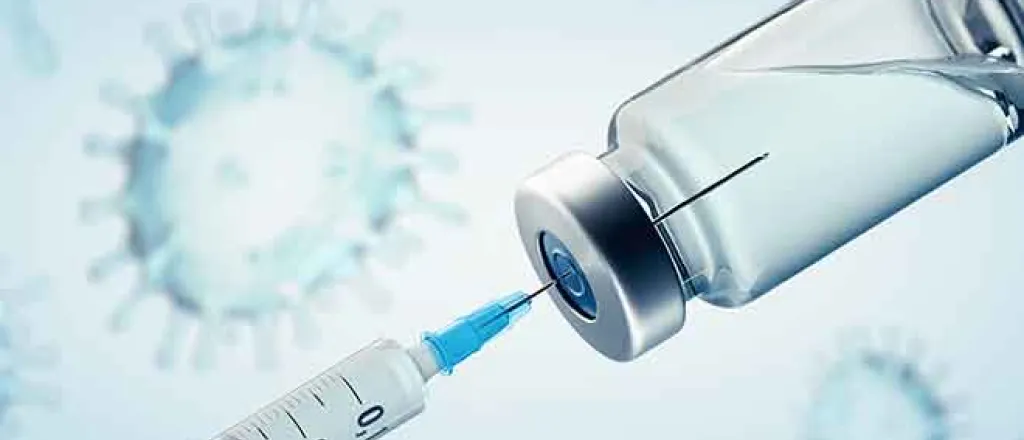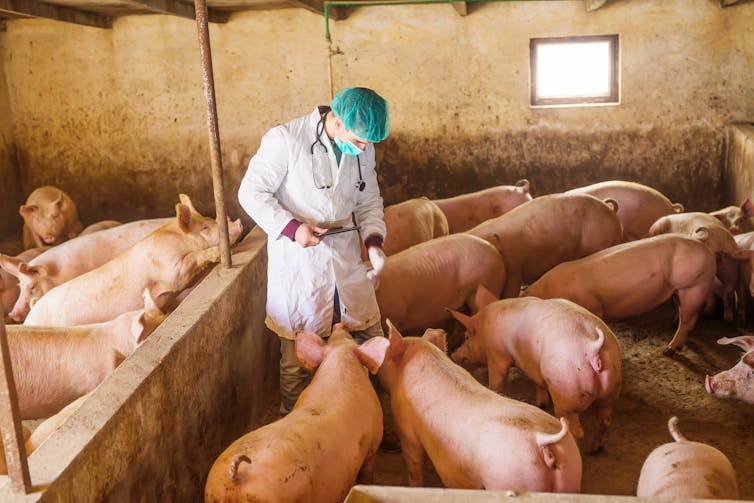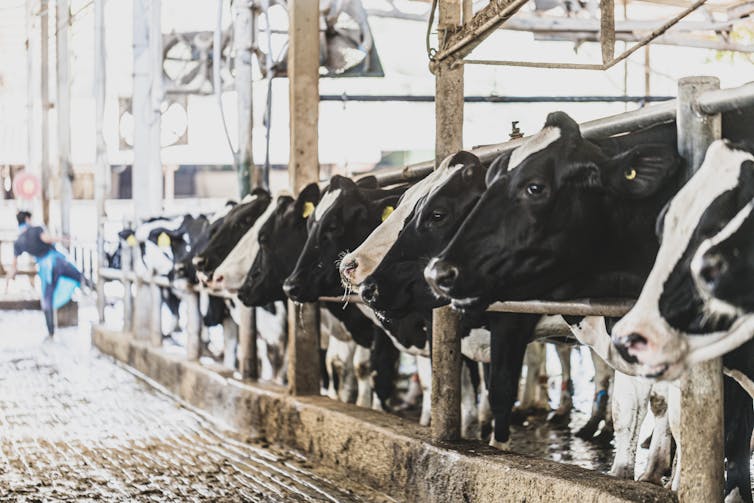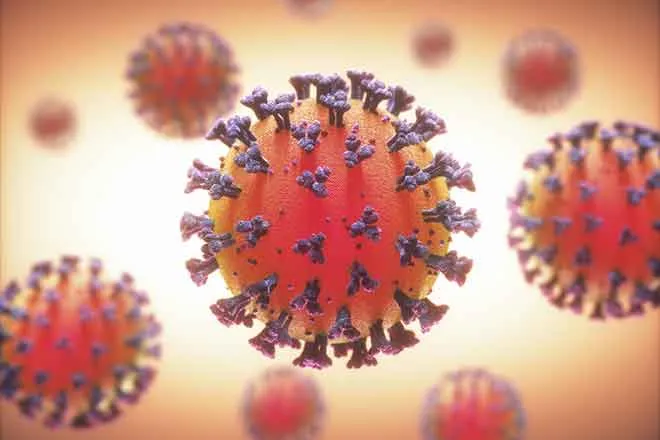
Vaccines using mRNA can protect farm animals against diseases traditional ones may not

David Verhoeven, Iowa State University
While effective vaccines for COVID-19 should have heralded the benefits of mRNA vaccines, fear and misinformation about their supposed dangers circulated at the same time. These misconceptions about mRNA vaccines have recently spilled over into worries about whether their use in agricultural animals could expose people to components of the vaccine within animal products such as meat or milk.
In fact, a number of states are drafting or considering legislation outlawing the use of mRNA vaccines in food animals or, at minimum, requiring their labeling on animal products in grocery stores. Idaho introduced a bill that would make it a misdemeanor to administer any type of mRNA vaccine to any person or mammal, including COVID-19 vaccines. A Missouri bill would have required the labeling of animal products derived from animals administered mRNA vaccines but failed to get out of committee. Arizona and Tennessee have also proposed labeling bills. Several other state legislatures are discussing similar measures.
I am a researcher who has been making vaccines for a number of years, and I started studying mRNA vaccines before the pandemic started. My research on using mRNA vaccines for cattle respiratory viruses has been referenced by social media users and anti-vaccine activists who say that using these vaccines in animals will endanger the health of people who eat them.
But these vaccines have been shown to reduce disease on farms, and it’s all but impossible for them to end up in your food.
Traditional animal vaccine approaches
In food animals, several types of vaccines have long been available for farmers to protect their animals from common diseases. These include inactivated vaccines that contain a killed version of a pathogen, live attenuated vaccines that contain a weakened version of a pathogen and subunit vaccines that contain one part of a pathogen. All can elicit good levels of protection from disease symptoms and infection. Producing these vaccines is often inexpensive.
However, each of these vaccines has drawbacks.
Inactivated and subunit vaccines often do not produce a strong enough immune response, and pathogens can quickly mutate into variants that limit vaccine effectiveness. The weakened pathogens in live attenuated vaccines have the remote possibility of reverting back to their full pathogenic form or mixing with other circulating pathogens and becoming new vaccine-resistant ones. They also must be grown in specific cell cultures to produce them, which can be time-consuming.
There are also several pathogens – such as porcine reproductive and respiratory syndrome virus, foot and mouth disease virus, H5N1 influenza and African swine fever virus – for which all three traditional approaches have yet to yield an effective vaccine.
Another major drawback for all three of these vaccine types is the time it takes to test and obtain federal approval to use them. Typically, animal vaccines take three or more years from development to licensure by the U.S. Department of Agriculture. Should new viruses make it to farms, playing catch-up using traditional vaccines could take too long to contain an outbreak.
Advantages of animal mRNA vaccines
All cells use mRNA, which contains the instructions to make the proteins needed to carry out specific functions. The mRNA used in vaccines encode instructions to make a protein from a pathogen of interest that immune cells learn to recognize and attack. This process builds immunological memory, so that when a pathogen carrying that same protein enters the body, the immune system will be ready to mount a quick and strong response against it.
Compared to traditional vaccines, mRNA vaccines have several advantages that make them ideal for protecting people and farm animals from both emerging and persistent diseases.
Unlike killed or subunit vaccines, mRNA vaccines increase the buildup of vaccine proteins in cells over time and train the immune system using conditions that look more like a viral infection. Like live attenuated vaccines, this process fosters the development of strong immune responses that may build better protection. In contrast to live attenuated viruses, mRNA vaccines cannot revert to a pathogenic form or mix with circulating pathogens. Furthermore, once the genetic sequence of a pathogen of interest is known, mRNA vaccines can be produced rather quickly.
The mRNA in vaccines can come in either a form that is structurally similar to what is normally found in the body, like those used in COVID-19 vaccines for people, or in a form that is self-amplifying, called saRNA. Because saRNA allows for higher levels of protein synthesis, researchers think that less mRNA would be needed to generate similar levels of immunity. However, a COVID-19 saRNA vaccine for people developed by biopharmaceutical company CureVac elicited less protection than traditional mRNA approaches.
Merck’s Sequivity is currently the only saRNA vaccine licensed for use in animals, and it is available by prescription to protect against swine flu in pigs.
Persistance of mRNA vaccine components
All mRNA vaccines are made in the laboratory using methods that were developed decades ago. Only recently has the technology advanced to the point where the body doesn’t immediately reject it by activating the antiviral defenses intrinsic to each of your cells. This rejection would occur before the immune system even had the chance to mount a response.
The COVID-19 mRNA vaccines used in people mix in modified nucleotides – the building blocks of RNA – with unmodified nucleotides so the mRNA can hide from the intrinsic antiviral sensors of the cell. These modified nucleotides are what allow the mRNA to persist in the body’s cells for a few days rather than just a few hours like natural mRNAs.
New methods of delivering the vaccine using lipid nanoparticles also ensure the mRNA isn’t degraded before it has a chance to enter cells and start making proteins.
Despite this stability, mRNA vaccines do not last long enough within animals after injection for any component of the vaccine to end up on grocery store shelves. Unlike for human vaccines, animal vaccine manufacturers must determine the withdrawal period in order to obtain USDA approval. This means any component of a vaccine cannot be found in the animal prior to milking or slaughter. Given the short lifespan of some of the agriculture animals and intensive milking schedules, withdrawal periods often need to be very short.
Between the mandatory vaccine withdrawal period, flash pasteurization for milk, degradation on the shelf and the cooking process for food products, there could not be any residual vaccine left for humans to consume. Even if you were to consume residual mRNA molecules, your gastrointestinal tract will rapidly degrade them.

Several mRNA vaccines for use in animals are in early stages of development. Merck’s USDA-licensed Sequivity does not use the modified nucleotides or lipid nanoparticles that allow those vaccine components to circulate for slightly longer periods in the body, so long-term persistence is unlikely.
Like in people, animal vaccines are tested for their safety and effectiveness in clinical trials. Approval for use from the USDA Center for Vaccine Biologics requires a modest level of protection against infection or disease symptoms. As with all animal vaccines, future mRNA vaccines will also need to be fully cleared from the animal’s body before they can be used in animals for human consumption.
mRNA vaccines for more farm animals
Whether mRNA vaccines will displace other vaccine types for livestock is yet to be determined. The cost of manufacturing these vaccines, their need to kept very cold and warm up before use to avoid degradation, and the efficacy of different types of mRNA vaccines all still need to be addressed before large-scale use can take place.
Traditional vaccines for food animals have protected them against many diseases. Limiting the use of mRNA vaccines right now would mean losing a new way to protect animals from pesky pathogens that current vaccines can’t fend off.![]()
David Verhoeven, Assistant Professor of Vet Microbiology and Preventive Medicine, Iowa State University
This article is republished from The Conversation under a Creative Commons license. Read the original article.
















